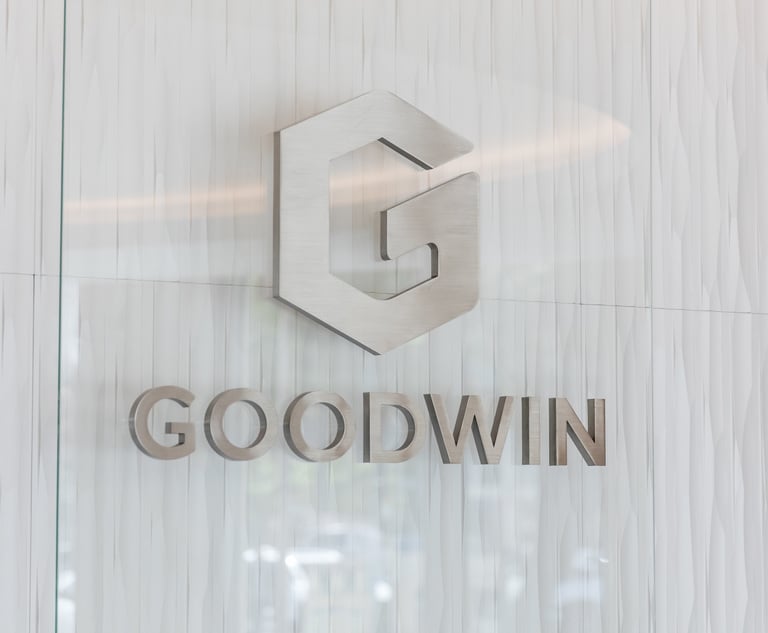Nominative Fair Use Under the Trademark Laws
Howard Wintner writes: The Second Circuit, and the district courts within it, have recognized the nominative fair use doctrine and used it for numerous years, including several district court decisions adopting the Ninth Circuit's test. However, prior to 2016, the Second Circuit had not endorsed either the Ninth or Third Circuit's test for nominative fair use.
August 07, 2017 at 02:01 PM
8 minute read
This article will address the doctrine of nominative fair use under the trademark laws. In a prior article, I discussed the doctrine of descriptive fair use. In a descriptive fair use case, the defendant uses the plaintiff's trademark to describe its own product or service. In contrast, in a nominative fair use case, the defendant uses the plaintiff's trademark to describe the plaintiff's product, even though its ultimate goal is to describe its own product or service.
In the Ninth Circuit
The nominative fair use doctrine was first recognized by the Ninth Circuit in New Kids on the Block v. News America Publishing, 971 F. 2d 302 (1992). The elements of this doctrine in the Ninth Circuit are that: (1) the product or service in question must be one not readily identifiable without use of the trademark; (2) only so much of the mark is used as is reasonably necessary to identify the product or service; and (3) the user must do nothing that would suggest sponsorship or endorsement by the trademark holder.
In New Kids, the plaintiff was a popular teen band, and the defendants were two newspapers. The newspapers used the trademark to publicize their telephone polls about the band. The Ninth Circuit found that all three requirements were satisfied. First, the newspapers could not offer this “service” without use of the band's name. Second, the newspapers only named the band in order to identify them as the subject of the polls. Third, nothing in the announcements suggested endorsement or joint sponsorship by the band. Significantly, in the Ninth Circuit, the nominative fair use analysis is not an affirmative defense. Rather, it replaces the multipart likelihood of confusion test. Cairns v. Franklin Mint Co., 292 F.3d 1139, 1151 (9th Cir. 2002).
In the Third Circuit
The Third Circuit has also expressly adopted the nominative fair use doctrine, but its approach is different than that of the Ninth Circuit. In the Third Circuit, the plaintiff must first show that there is a likelihood of confusion. Assuming that the plaintiff does so, the defendant can still avoid liability by establishing nominative fair use as an affirmative defense. Century 21 Real Estate v. Lendingtree, 425 F.3d 211 (3d Cir. 2005). The same three factors used by the Ninth Circuit are to be considered, but they are articulated somewhat differently in the Third Circuit. As to the first requirement, the Third Circuit stated that while it should be shown whether the plaintiff's product needs to be identified by its mark, it also should be examined “whether defendant's use of it … is necessary to accurately describe what defendant does or sells, or whether its reference to plaintiff's mark is … gratuitous.” The Third Circuit added that it need not be shown that defendant's use of the mark is indispensible in order to find this factor fulfilled. Rather, the district courts only need to be satisfied “that the identification by the defendant of plaintiff's product or service would be rendered significantly more difficult without use of the mark.” As to the second requirement, while the Ninth Circuit requires that the defendant use only so much of the mark as necessary to identify the plaintiff's product or service, the Third Circuit's test is “whether the quantum of the plaintiff's mark used by the defendant was appropriate.” Finally, the Third Circuit's standard for the third requirement is whether the “defendant's conduct or language reflect the true and accurate relationship between plaintiff and defendant's products or services.” This includes both what the defendant did to suggest sponsorship, as well as its “failure to state or explain some aspect of the relationship.”
In the Second Circuit
The Second Circuit, and the district courts within it, have recognized the nominative fair use doctrine and used it for numerous years, including several district court decisions adopting the Ninth Circuit's test. However, prior to 2016, the Second Circuit had not endorsed either the Ninth or Third Circuits' test for nominative fair use. In International Information Systems Security Certification Consortium v. Security University, 823 F.3d 153 (2016), the Second Circuit announced its test for the application of nominative fair use, rejecting the approach of both the Ninth and Third Circuits.
The Second Circuit disagreed with the Third Circuit that nominative fair use is an affirmative defense to a showing of a likelihood of confusion. The flaw found by the Second Circuit is that the Third Circuit's rationale was based a Supreme Court's decision finding that descriptive fair is an affirmative defense. More specifically, the Second Circuit found that the Supreme Court's decision was distinguishable because descriptive fair use is statutorily defined as an affirmative defense, while nominative fair use was judicially created. The Second Circuit also disagreed with the Ninth Circuit that nominative fair use supplants the likelihood of confusion test. The Second Circuit concluded that, in assessing whether there was a likelihood of confusion, the district court “should consider the Third and Ninth Circuit's nominative use factors in addition to [analyzing each of] the Polaroid factors.”1
This content has been archived. It is available through our partners, LexisNexis® and Bloomberg Law.
To view this content, please continue to their sites.
Not a Lexis Subscriber?
Subscribe Now
Not a Bloomberg Law Subscriber?
Subscribe Now
NOT FOR REPRINT
© 2025 ALM Global, LLC, All Rights Reserved. Request academic re-use from www.copyright.com. All other uses, submit a request to [email protected]. For more information visit Asset & Logo Licensing.
You Might Like
View All
Testing The Limits of “I Agree”: Court of Appeals Examines Clickwrap Arbitration Agreements
13 minute read
Change on the Horizon?: 2025 Begins With Numerous Patent Bills Pending
8 minute read

IP at the Frontier of AI: Navigating the New Landscape
Trending Stories
- 1Uber Files RICO Suit Against Plaintiff-Side Firms Alleging Fraudulent Injury Claims
- 2The Law Firm Disrupted: Scrutinizing the Elephant More Than the Mouse
- 3Inherent Diminished Value Damages Unavailable to 3rd-Party Claimants, Court Says
- 4Pa. Defense Firm Sued by Client Over Ex-Eagles Player's $43.5M Med Mal Win
- 5Losses Mount at Morris Manning, but Departing Ex-Chair Stays Bullish About His Old Firm's Future
Who Got The Work
J. Brugh Lower of Gibbons has entered an appearance for industrial equipment supplier Devco Corporation in a pending trademark infringement lawsuit. The suit, accusing the defendant of selling knock-off Graco products, was filed Dec. 18 in New Jersey District Court by Rivkin Radler on behalf of Graco Inc. and Graco Minnesota. The case, assigned to U.S. District Judge Zahid N. Quraishi, is 3:24-cv-11294, Graco Inc. et al v. Devco Corporation.
Who Got The Work
Rebecca Maller-Stein and Kent A. Yalowitz of Arnold & Porter Kaye Scholer have entered their appearances for Hanaco Venture Capital and its executives, Lior Prosor and David Frankel, in a pending securities lawsuit. The action, filed on Dec. 24 in New York Southern District Court by Zell, Aron & Co. on behalf of Goldeneye Advisors, accuses the defendants of negligently and fraudulently managing the plaintiff's $1 million investment. The case, assigned to U.S. District Judge Vernon S. Broderick, is 1:24-cv-09918, Goldeneye Advisors, LLC v. Hanaco Venture Capital, Ltd. et al.
Who Got The Work
Attorneys from A&O Shearman has stepped in as defense counsel for Toronto-Dominion Bank and other defendants in a pending securities class action. The suit, filed Dec. 11 in New York Southern District Court by Bleichmar Fonti & Auld, accuses the defendants of concealing the bank's 'pervasive' deficiencies in regards to its compliance with the Bank Secrecy Act and the quality of its anti-money laundering controls. The case, assigned to U.S. District Judge Arun Subramanian, is 1:24-cv-09445, Gonzalez v. The Toronto-Dominion Bank et al.
Who Got The Work
Crown Castle International, a Pennsylvania company providing shared communications infrastructure, has turned to Luke D. Wolf of Gordon Rees Scully Mansukhani to fend off a pending breach-of-contract lawsuit. The court action, filed Nov. 25 in Michigan Eastern District Court by Hooper Hathaway PC on behalf of The Town Residences LLC, accuses Crown Castle of failing to transfer approximately $30,000 in utility payments from T-Mobile in breach of a roof-top lease and assignment agreement. The case, assigned to U.S. District Judge Susan K. Declercq, is 2:24-cv-13131, The Town Residences LLC v. T-Mobile US, Inc. et al.
Who Got The Work
Wilfred P. Coronato and Daniel M. Schwartz of McCarter & English have stepped in as defense counsel to Electrolux Home Products Inc. in a pending product liability lawsuit. The court action, filed Nov. 26 in New York Eastern District Court by Poulos Lopiccolo PC and Nagel Rice LLP on behalf of David Stern, alleges that the defendant's refrigerators’ drawers and shelving repeatedly break and fall apart within months after purchase. The case, assigned to U.S. District Judge Joan M. Azrack, is 2:24-cv-08204, Stern v. Electrolux Home Products, Inc.
Featured Firms
Law Offices of Gary Martin Hays & Associates, P.C.
(470) 294-1674
Law Offices of Mark E. Salomone
(857) 444-6468
Smith & Hassler
(713) 739-1250






